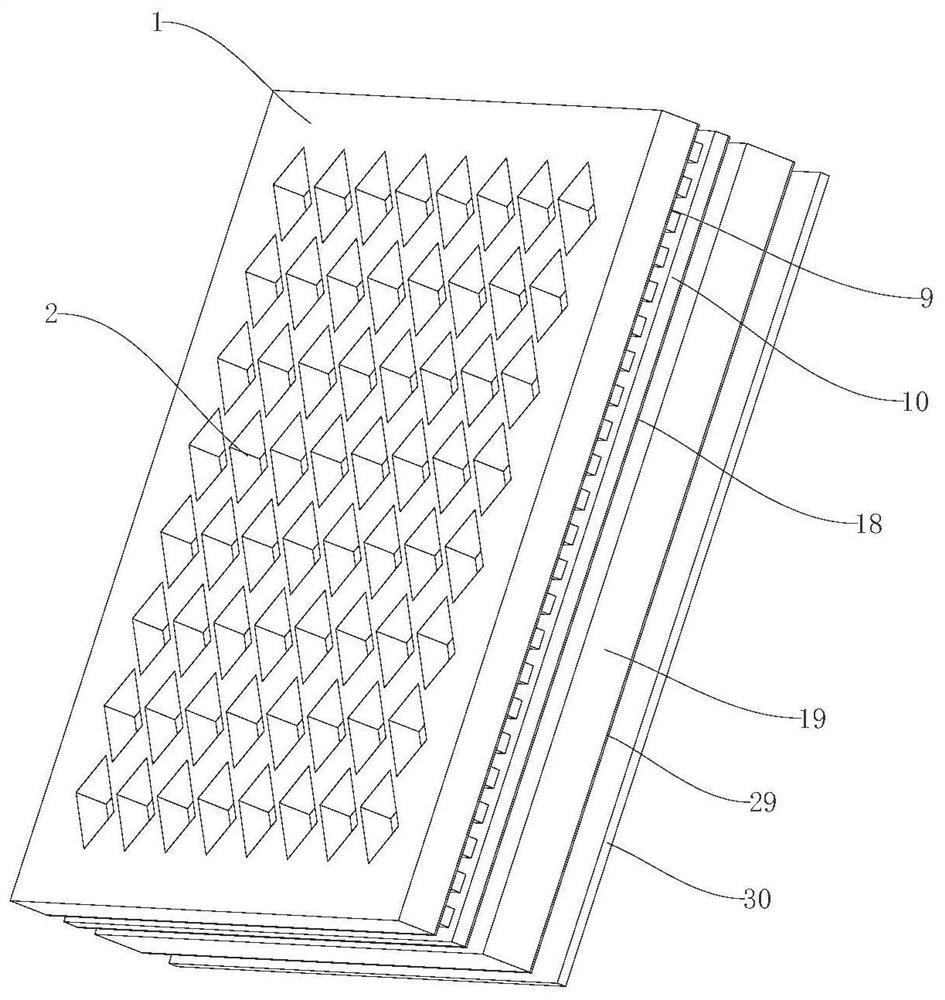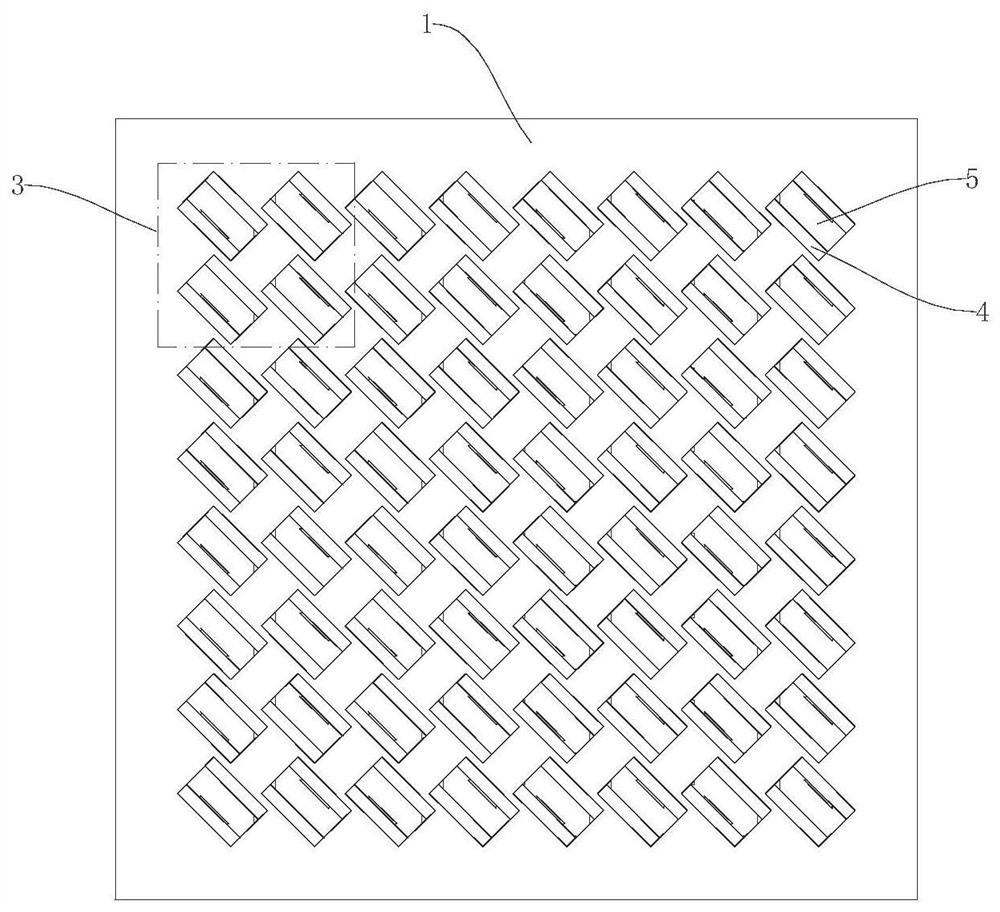Broadband gap waveguide array antenna
A technology of gap waveguide and array antenna, applied in the direction of antenna, antenna array, antenna components, etc., can solve the problems of low sidelobe, antenna cost increase, gain reduction, etc., achieve low sidelobe, optimize the pattern, and suppress cross poles effect
- Summary
- Abstract
- Description
- Claims
- Application Information
AI Technical Summary
Problems solved by technology
Method used
Image
Examples
Embodiment
[0030] Example: such as figure 1 and figure 2 As shown, a wide-band gap waveguide array antenna includes a radiation layer and a feed layer stacked in order from top to bottom. The feed layer is used to convert a single TE10 mode into multiple TE10 modes with the same power and phase signal, and transmit multiple TE10 mode signals to the radiation layer, the radiation layer is used to radiate the multiple TE10 mode signals from the feed layer to free space, and the radiation layer includes radiation unit sub-arrays arranged in order from top to bottom layer, the first gap waveguide coupling layer and the second gap waveguide coupling layer, the radiation unit sub-array layer includes a first flat plate 1 and a radiation array 2 arranged on the first flat plate 1, the first flat plate 1 is a rectangular plate, and the radiation array 2 It is formed by distributing 16 radiating units 3 in a manner of 4 rows×4 columns, and each radiating unit 3 respectively includes a first rec...
PUM
 Login to View More
Login to View More Abstract
Description
Claims
Application Information
 Login to View More
Login to View More - R&D
- Intellectual Property
- Life Sciences
- Materials
- Tech Scout
- Unparalleled Data Quality
- Higher Quality Content
- 60% Fewer Hallucinations
Browse by: Latest US Patents, China's latest patents, Technical Efficacy Thesaurus, Application Domain, Technology Topic, Popular Technical Reports.
© 2025 PatSnap. All rights reserved.Legal|Privacy policy|Modern Slavery Act Transparency Statement|Sitemap|About US| Contact US: help@patsnap.com



